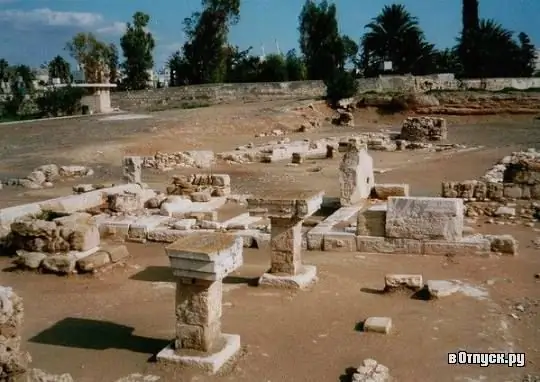
Description of the attraction
Ancient Kition, which is considered at the moment not only one of the most ancient cities in Cyprus, but also in the whole world, was located on the territory of modern Larnaca. There is even a mention of this city-state in the Bible - there it is named Kitim. According to one of the versions, the founder of this city was the great-grandson of the notorious Noah, whose name was Kittim.
At the site of excavations, which began in 1920, evidence was found that as early as 1400-1100 BC the area was inhabited by the Phoenicians and Mycenaeans. The city itself is believed to have been built around 1200 BC. by the Mycenaean Greeks. It was they who erected a unique temple complex consisting of five buildings, as well as the walls surrounding the city, which were built of huge stone blocks.
The city experienced several periods of decline and prosperity, which were associated with numerous raids by various peoples - Egyptians, Persians, Assyrians. The peak of the development of Kition is considered the Phoenician period. In addition to the fact that the Phoenicians rebuilt the city, which was almost completely destroyed after a strong earthquake, they brought with them to this territory a more developed civilization with a rich culture and maritime trade.
During the excavations of Kition, archaeologists managed to find many objects that this people left behind - the remains of buildings, dishes, figurines, fragments of inscriptions on various surfaces. But the most significant find is considered to be the ruins of a temple dedicated to the goddess of love and fertility Astarte, who was revered by the Phoenicians as the main female deity. In addition, copper workshops, tombs and tombs have also been found.
All these finds can be seen in the open museums that were equipped at the excavation sites, as well as in the Larnaca Archaeological Museum.






